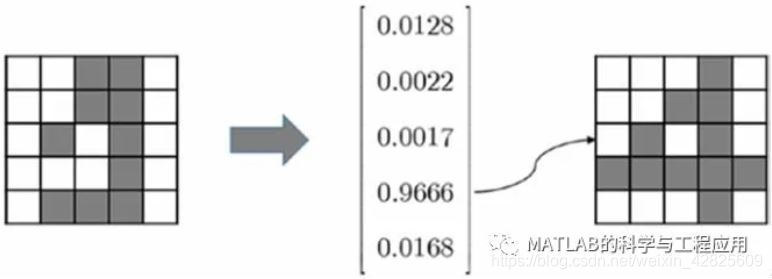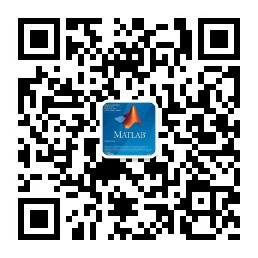让我们逐一查看。
Let’s take a look one by one.
对于第一幅图像,神经网络认为该图为4的概率为96.66%。
For the first image, the neural networkdecided it was a 4 by 96.66% probability.
比较图4-16中的左右两幅图像,它们分别是神经网络的输入和判断输出。
Compare the left and right images in Figure4-16, which are the input and the digit that the neural network selected,respectively.

图4-16 左右图像分别是神经网络的输入和判断输出Left and rightimages are the input and digit that the neural network selected, respectively
从两幅图的对比可以看出,输入图像中的内容确实包含了数字4的重要特征。
The input image indeed contains importantfeatures of the number 4.
虽然看起来也与1相似,但更与4接近。
Although it appears to be a 1 as well, itis closer to a 4.
分类看起来似乎是合理的。
The classification seems reasonable.
接下来,第二幅图像被认为是2的概率为99.36%。
Next, the second image is classified as a 2by 99.36% probability.
当我们比较输入图像和训练数据2时,看起来应该是合理的。
This appears to be reasonable when wecompare the input image and the training data 2.
它们之间只有一个像素的差异。
They only have a one-pixel difference.
如图4-17所示。
See Figure 4-17.

图4-17 第二幅图像被判断为2The second image isclassified as a 2
第三幅图像被认为是3的概率为97.62%。
The third image is classified as a 3 by97.62% probability.
当我们对比两幅图像时,这也是很合理的。
This also seems reasonable when we comparethe images.
如图4-18所示。
See Figure 4-18.

图4-18 第三幅图像被判断为3The third image isclassified as a 3
然而,当我们比较第二和第三幅输入图像时,它们之间只有一个像素的差别。(待判断的输入图像之间只有一个像素的差别!!!)
However, when we compare the second andthird input images, the difference is only one pixel.
这种微小的差异导致了两种完全不同的分类。
This tiny difference results in two totallydifferent classifications.
你可能没有注意,图像2和3的训练数据(即标准模板)也只有两个像素的差别。
You may not have paid attention, but thetraining data of these two images has only a two-pixel difference.
神经网络能捕捉到这种微小的差异,并将其应用到实践中,这岂不是令人惊叹吗?
Isn’t it amazing that the neural networkcatches this small difference and applies it to actual practice?
——本文译自Phil Kim所著的《Matlab Deep Learning》
更多精彩文章请关注微信号: